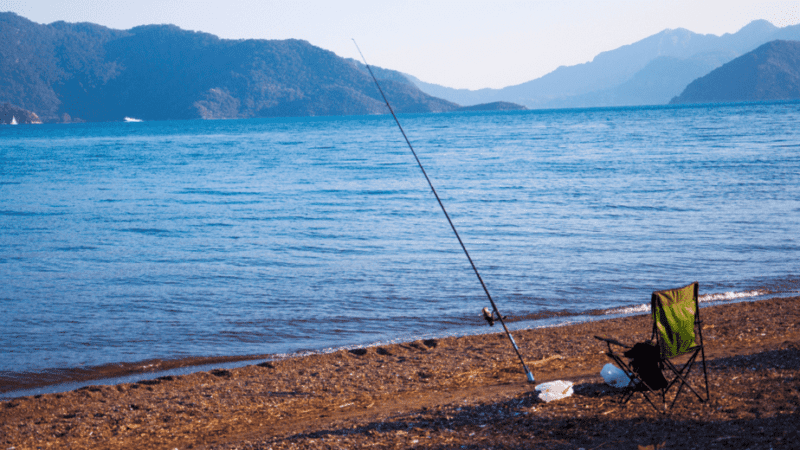Whether you are fishing for fun or you are a professional, using a proper sound quality fishing line is very important.
There are many different types of fishing lines that you can purchase, but good quality is the best to opt for.
Using decent-quality fishing lines means that you can avoid things like breakage, knots, and bad quality can even affect your casing ability.
You can get quality lines in both braid style, mono, and fluoro line.
Did you know that your fishing line can degrade faster the more you use it?
Table of Contents
How Often Should You Change Fishing Line?
It is a good idea to change up your fishing line at least twice a year. There are ways to extend the life of your fishing line, such as limiting how often you use that rod and line and avoid storing the line in direct sunlight. If you are using a thinner line, you will need to change this more often due to the weaker structure. It will wear out quicker.
Is It Important To Change The Line Often?
If you are using a really good quality line, then you may get away with changing it only once a year.
You can always cut some off the reel if you prefer. If you prefer to fish in smaller waters, then you are not going to toss out more than around 50 meters.
This means you can just cut off 50m each time you go out if you are only fishing every now and again.
You can get fishing line reels with up to 1000m, so even cutting off 50m each time, the reel will still last a while.
Is There An Expiry On Fishing Line?
You aren’t going to get as long out of fluorocarbon and monofilament lines as you will with braided.
Braided can last for a few years, whereas the mono and fluoro tend to last a lot less than that, especially when exposed to the water.
You might have a line that is a few years old that might still be ok to use.
Sometimes the line is old but is still useable, even just for a weekend fishing or to have some fun.
It is recommended to use a fishing line that is fairly new when you are professionally fishing.
When Should Fishing Line Be Replaced?
Monofilament Line
Monofilament is the popular line, and you will find that most lines are made from monofilament.
This is due to the fact it is very cheap to buy, easy to manage and you can tie it easily.
Monofilament can last up to 6 months for heavy fishing and around 12 months if you don’t fish that often.
Monofilament can last for up to 5 years on the shelf when it is stored properly.
Fluorocarbon Type Fishing Line
The good thing about fluorocarbons is the fact they stand out far better underwater than the monotype does.
Fluorocarbon is also more sun-friendly and can last for up to 6 months of frequent fishing.
You can expect to get about two years out of the line for every now and again fishing.
Braided Fishing Line
A braided fishing line is expensive to buy due to its strength and durability.
This type of line will outdo all the other types.
This type of line is narrow, which makes it perfect for bass trolling.
For braided lines, you can expect to get around two years out of a heavy fisher.
For storing on the shelf you can get up to ten years lifespan when stored correctly.
Conclusion
There is no doubt that whatever type of fishing you are doing, you need a fishing line.
Using the right line for the job will help you to achieve that.
If you wish to change your line more frequently than stated above, that is perfectly fine.
Ensure you store your line properly and always give it a good check over before you go out and fish.
Frequently Asked Questions about Fishing Line
Should I Be Inspecting My Line Often?
No matter how well you store your fishing line, it will still degrade over time like everything else. It is always a good idea to inspect your line each time you go out to fish. If the line is kinked or looks worn etc, grab yourself a new line and change it over.
Where Should I Be Storing My Line?
It is a good idea to store your fishing line in a place that maintains a moderate temperature. During the year, you need to keep the temperature pretty even and avoid humidity as much as possible.

Hi, my name is Johanna and I am the owner of this blog. I am passionate about “The Great Outdoors” and write about my fishing, hiking, and camping adventures and share my knowledge with you.
